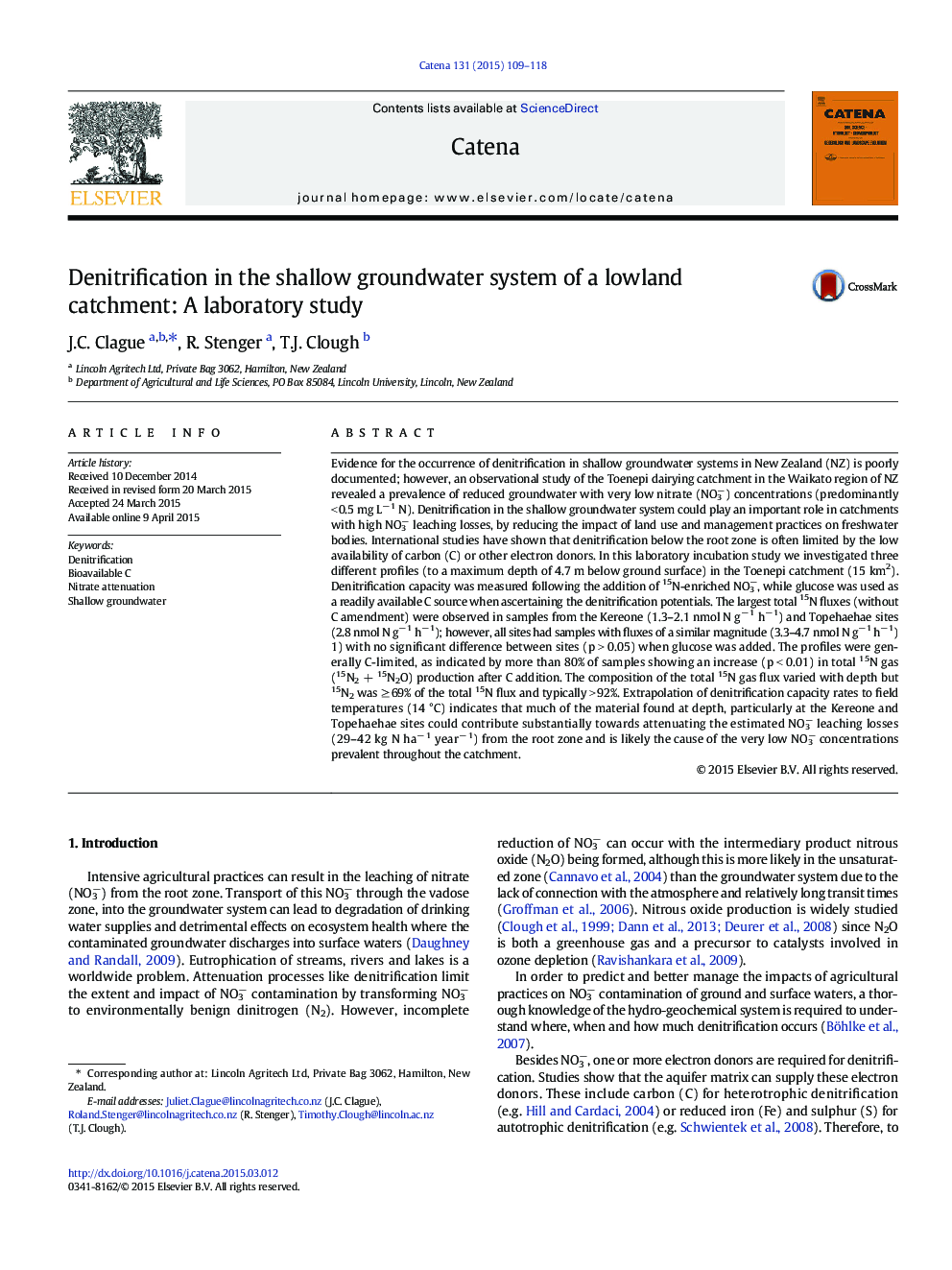| کد مقاله | کد نشریه | سال انتشار | مقاله انگلیسی | نسخه تمام متن |
|---|---|---|---|---|
| 4571131 | 1629221 | 2015 | 10 صفحه PDF | دانلود رایگان |
عنوان انگلیسی مقاله ISI
Denitrification in the shallow groundwater system of a lowland catchment: A laboratory study
دانلود مقاله + سفارش ترجمه
دانلود مقاله ISI انگلیسی
رایگان برای ایرانیان
کلمات کلیدی
موضوعات مرتبط
مهندسی و علوم پایه
علوم زمین و سیارات
فرآیندهای سطح زمین
پیش نمایش صفحه اول مقاله

چکیده انگلیسی
Evidence for the occurrence of denitrification in shallow groundwater systems in New Zealand (NZ) is poorly documented; however, an observational study of the Toenepi dairying catchment in the Waikato region of NZ revealed a prevalence of reduced groundwater with very low nitrate (NO3â) concentrations (predominantly < 0.5 mg Lâ 1 N). Denitrification in the shallow groundwater system could play an important role in catchments with high NO3â leaching losses, by reducing the impact of land use and management practices on freshwater bodies. International studies have shown that denitrification below the root zone is often limited by the low availability of carbon (C) or other electron donors. In this laboratory incubation study we investigated three different profiles (to a maximum depth of 4.7 m below ground surface) in the Toenepi catchment (15 km2). Denitrification capacity was measured following the addition of 15N-enriched NO3â, while glucose was used as a readily available C source when ascertaining the denitrification potentials. The largest total 15N fluxes (without C amendment) were observed in samples from the Kereone (1.3-2.1 nmol N gâ 1 hâ 1) and Topehaehae sites (2.8 nmol N gâ 1 hâ 1); however, all sites had samples with fluxes of a similar magnitude (3.3-4.7 nmol N gâ 1 hâ 1) with no significant difference between sites (p > 0.05) when glucose was added. The profiles were generally C-limited, as indicated by more than 80% of samples showing an increase (p < 0.01) in total 15N gas (15N2 + 15N2O) production after C addition. The composition of the total 15N gas flux varied with depth but 15N2 was â¥Â 69% of the total 15N flux and typically > 92%. Extrapolation of denitrification capacity rates to field temperatures (14 °C) indicates that much of the material found at depth, particularly at the Kereone and Topehaehae sites could contribute substantially towards attenuating the estimated NO3â leaching losses (29-42 kg N haâ 1 yearâ 1) from the root zone and is likely the cause of the very low NO3â concentrations prevalent throughout the catchment.
ناشر
Database: Elsevier - ScienceDirect (ساینس دایرکت)
Journal: CATENA - Volume 131, August 2015, Pages 109-118
Journal: CATENA - Volume 131, August 2015, Pages 109-118
نویسندگان
J.C. Clague, R. Stenger, T.J. Clough,